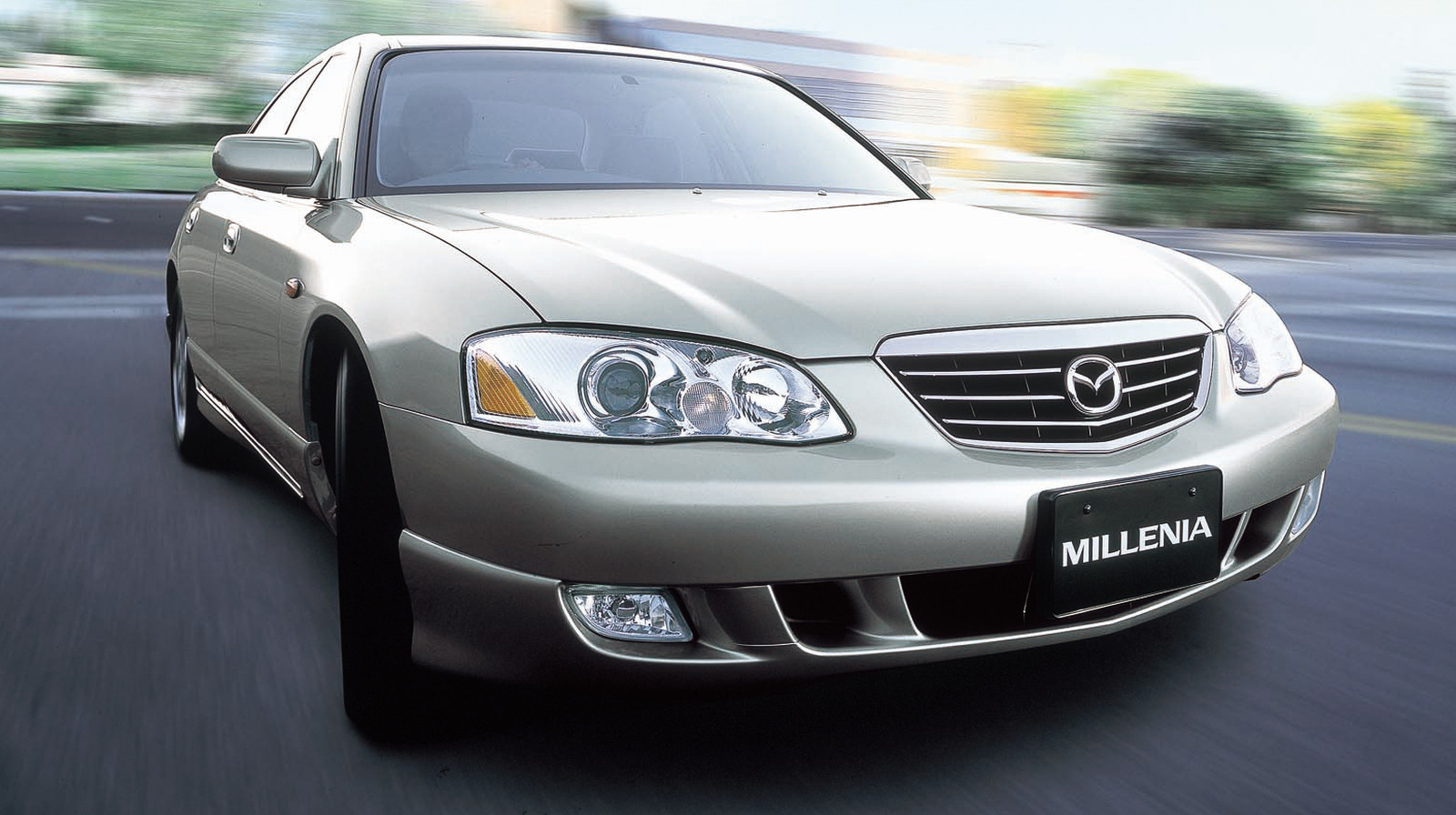The Mazda CX-90 feels like a bona fide luxury SUV, but the company’s current upmarket push isn’t its first. At one time, Mazda was actually going to launch its own luxury sub-brand, and it would bring innovations like a supercharged Miller-cycle engine. With that engine, customers could look forward to roughly 50% more power than they’d find in a comparable engine running on the traditional Otto cycle.
Now, the planned premium brand – Amati – never quite got itself in gear, but Mazda didn’t want to let its engine investment go to waste. As a result, a supercharged 2.3-liter Miller-cycle V6 made its premiere in the 1995 Mazda Millenia sedan that was originally supposed to be an Amati model. The engine delivered 210 horsepower and a matching 210 pound-feet of torque, and WardsAuto raved about the powerplant at the time, calling it “the largest single lump of surprise and delight in the business.”
The secret sauce was in the Miller cycle itself. Invented by Ralph Miller in 1957, the system can boost efficiency by roughly 15% compared to regular internal combustion engines, thanks to the way its valves operate during the compression stroke. Let’s see how it works.
How the Miller cycle works
The four basic steps in a typical gas engine’s combustion cycle probably aren’t new to Jalopnik readers: The pistons move down the cylinders to draw in air/fuel, move up to compress the mixture, move down to make power as the air/fuel combust, and then move up to push out the leftover exhaust gas. That hasn’t changed since the first four-stroke engine was developed in 1876 by Nikolas Otto – who also gave his name the engine style.
However, the Otto cycle– despite becoming the go-to system for gas-powered engines — isn’t the only way to run a motor. Most hybrid powertrains today, including the Toyota Prius’ hybrid perfection, have gas engines that rely on the Atkinson cycle, which produces less power more efficiently by shortening the compression stroke. Hybrids then take advantage of their electric motors to make up for the lower power output.
The Miller cycle pushes the Atkinson cycle to the next level by adjusting when the intake valves close. With the Miller setup, intake valves are open during about 20 to 30% of the compression stroke. The outcome is that less engine power is required for compressing. While hybrid cars with Atkinson cycle engines leverage electric motors to make up for the lost power output, Miller and Mazda both turned to forced induction in the form of superchargers.
Do other cars use the Miller cycle?
Mazda’s original Miller cycle engine added cost and complexity to the production process, and the Millenia never gained much traction with customers. As a result, the use of the engine stopped when Mazda discontinued the Millenia. But that wasn’t the end of the story. For one thing, Mazda’s current Skyactiv engine technologies are derived from its experiment with the Miller cycle. Dave Coleman, Mazda North America’s former vehicle evaluation manager and current engineering manager, told WardsAuto that, “We call it the Mazda Miller Cycle, because the Miller Cycle is our method of obtaining an Atkinson Cycle.”
Another Miller-cycle machine is the Volvo XC90 that was Miller-ized for 2025. Already noticeably efficient, the XC90 welcomed a 4% improvement in fuel efficiency with the new setup.
In addition, Volkswagen’s Budack cycle engine, the 2.0-liter turbocharged mill for vehicles like the VW Tiguan, among others, actually operates on a variant of the Miller cycle. The engine has undergone its own share of improvements over the years, with Volkswagen pointing out that the 2025 Tiguan benefits from an even more intense application of the Miller cycle. The numbers tell the story, as the ’24 Tiguan took to the road with 184 horsepower and an EPA line of 23 mpg city/30 mpg highway/26 mpg combined, while the updated motor makes 201 horses and checks in with the EPA at 25/32/28.
First Appeared on
Source link












